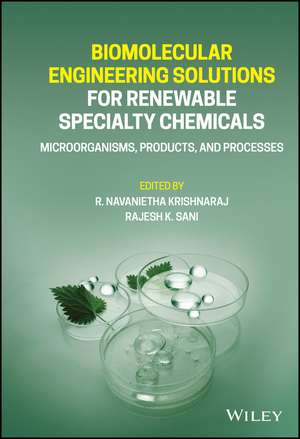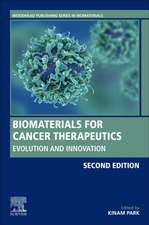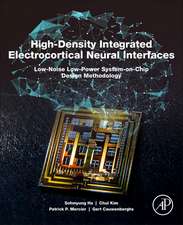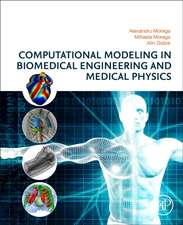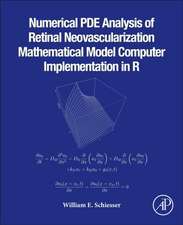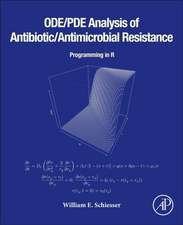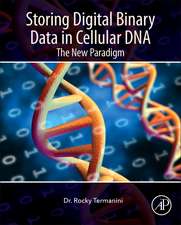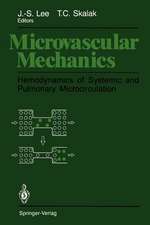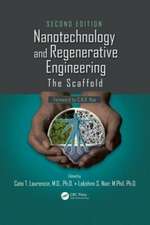Biomolecular Engineering Solutions for Renewable Specialty Chemicals – Microorganisms, Products, and Processes
Autor RN Krishnarajen Limba Engleză Hardback – 9 dec 2021
Discover biomolecular engineering technologies for the production of biofuels, pharmaceuticals, organic and amino acids, vitamins, biopolymers, surfactants, detergents, and enzymes
In Biomolecular Engineering Solutions for Renewable Specialty Chemicals, distinguished researchers and editors Drs. R. Navanietha Krishnaraj and Rajesh K. Sani deliver a collection of insightful resources on advanced technologies in the synthesis and purification of value-added compounds. Readers will discover new technologies that assist in the commercialization of the production of value-added products.
The editors also include resources that offer strategies for overcoming current limitations in biochemical synthesis, including purification. The articles within cover topics like the rewiring of anaerobic microbial processes for methane and hythane production, the extremophilic bioprocessing of wastes to biofuels, reverse methanogenesis of methane to biopolymers and value-added products, and more.
The book presents advanced concepts and biomolecular engineering technologies for the production of high-value, low-volume products, like therapeutic molecules, and describes methods for improving microbes and enzymes using protein engineering, metabolic engineering, and systems biology approaches for converting wastes.
Readers will also discover:
- A thorough introduction to engineered microorganisms for the production of biocommodities and microbial production of vanillin from ferulic acid
- Explorations of antibiotic trends in microbial therapy, including current approaches and future prospects, as well as fermentation strategies in the food and beverage industry
- Practical discussions of bioactive oligosaccharides, including their production, characterization, and applications
- In-depth treatments of biopolymers, including a retrospective analysis in the facets of biomedical engineering
Perfect for researchers and practicing professionals in the areas of environmental and industrial biotechnology, biomedicine, and the biological sciences, Biomolecular Engineering Solutions for Renewable Specialty Chemicals is also an invaluable resource for students taking courses involving biorefineries, biovalorization, industrial biotechnology, and environmental biotechnology.
Preț: 1399.95 lei
Preț vechi: 1473.63 lei
-5% Nou
267.87€ • 280.44$ • 221.65£
Carte tipărită la comandă
Livrare economică 07-21 aprilie
Specificații
ISBN-10: 1119771927
Pagini: 480
Dimensiuni: 151 x 238 x 30 mm
Greutate: 0.81 kg
Editura: Wiley
Locul publicării:Hoboken, United States
Cuprins
Notă biografică
R. Navanietha Krishnaraj, PhD, is Research Professor in the Composite and Nanocomposite Advanced Manufacturing-Biomaterials Center in the Department of Chemical and Biological Engineering at the South Dakota School of Mines and Technology. He received the Award for Cutting Edge Research (Fulbright Faculty Award) in 2016. Rajesh K. Sani, PhD, is Professor in the Departments of Chemical and Biological Engineering at South Dakota School of Mines and Technology, South Dakota, USA. He is the Biocatalysis Program Committee Member for the Society for Industrial Microbiology and Biotechnology.
